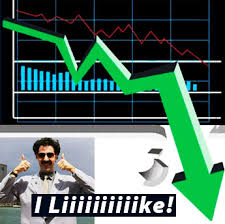
Leucadia National Corp.(LUK) is a publicly traded diversified holding company with investments ranging from telecoms, medical products, real estate, auto finance, investment banking, timber,mining, plastics, gaming entertainment, energy and even a couple of wineries. Their current track record goes back almost 30 years with their roots being traced back even farther to the mid 1800's. Leucadia which is run by the duo Ian Cumming and Joseph Steinberg does not come up in the media as much as the well known Berkshire Hathaway(BRKA)(BRKB) run by Warren Buffett. However, over the last 30 years these value players have quietly compounded an impressive track record which ranks highly amongst any peer group. Many of their investments are private companies in which they own a significant stake or the whole company. They currently hold positions in 8 publicly traded companies with the largest being the Jefferies Group(JEF).
Currently LUK trades at $19.50 per share with a book value of $25.00 per share. Their debt/equity ratio is .38, with revenues slightly over 1 billion. Management currently owns 23% of the shares outstanding while large institutions such as, Fairholme(FAIRX), Morgan Stanley(MS) and others own 66%. At the end of September their net worth or stock holders equity came to $5.7 billion dollars. According to their last annual report they had an opportunity to make a large investment in a real estate, farming and ranching business in Argentina which they will give further details at the end of 2008.
Below is Leucadia National's Track Record For The Last 30 Years:
Book Value Equity
Per Share
1978 ($0.04) (a) ($7,657) (a)
1979 0.11 22,945
1980 0.12 24,917
1981 0.14 23,997
1982 0.36 61,178
1983 0.43 73,498
1984 0.74 126,097
1985 0.83 151,033
1986 1.27 214,587
1987 1.12 180,408
1988 1.28 206,912
1989 1.64 257,735
1990 1.97 268,567
1991 2.65 365,495
1992 3.69 618,161
1993 5.43 907,856
1994 5.24 881,815
1995 6.16 1,111,491
1996 6.17 1,118,107
1997 9.73 1,863,531
1998 9.97 1,853,159
1999 6.59(b) 1,121,988(b)
2000 7.26 1,204,241
2001 7.21 1,195,453
2002 8.58 1,534,525
2003 10.05 2,134,161
2004 10.50 2,258,653
2005 16.95 3,661,914(c)
2006 18.00 3,893,275
2007 25.03 5,570,492(d)
1979 0.11 22,945
1980 0.12 24,917
1981 0.14 23,997
1982 0.36 61,178
1983 0.43 73,498
1984 0.74 126,097
1985 0.83 151,033
1986 1.27 214,587
1987 1.12 180,408
1988 1.28 206,912
1989 1.64 257,735
1990 1.97 268,567
1991 2.65 365,495
1992 3.69 618,161
1993 5.43 907,856
1994 5.24 881,815
1995 6.16 1,111,491
1996 6.17 1,118,107
1997 9.73 1,863,531
1998 9.97 1,853,159
1999 6.59(b) 1,121,988(b)
2000 7.26 1,204,241
2001 7.21 1,195,453
2002 8.58 1,534,525
2003 10.05 2,134,161
2004 10.50 2,258,653
2005 16.95 3,661,914(c)
2006 18.00 3,893,275
2007 25.03 5,570,492(d)
21.7% compound return on equity
(a) A negative number cannot be compounded; therefore, we have used 1979.
(b) Reflects a reduction resulting from dividend payments in 1999 totaling $811.9 million or $4.53 per share.
(c) Reflects the recognition of $1,135.1 million of the deferred tax asset or $5.26 per share.
(d) Reflects the recognition of $542.7 million of the deferred tax asset or $2.44 per share.
(Dollars in thousands, except per share amounts)
* All information is believed to be reliable but as usual you need to do further research








